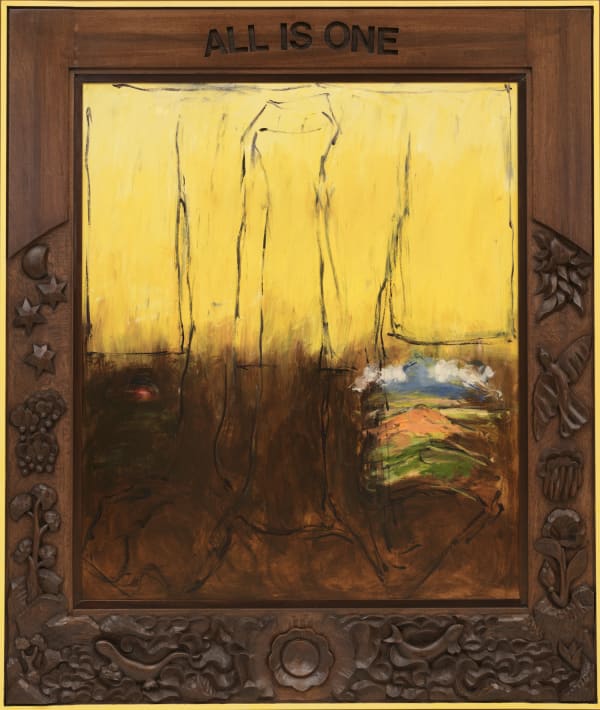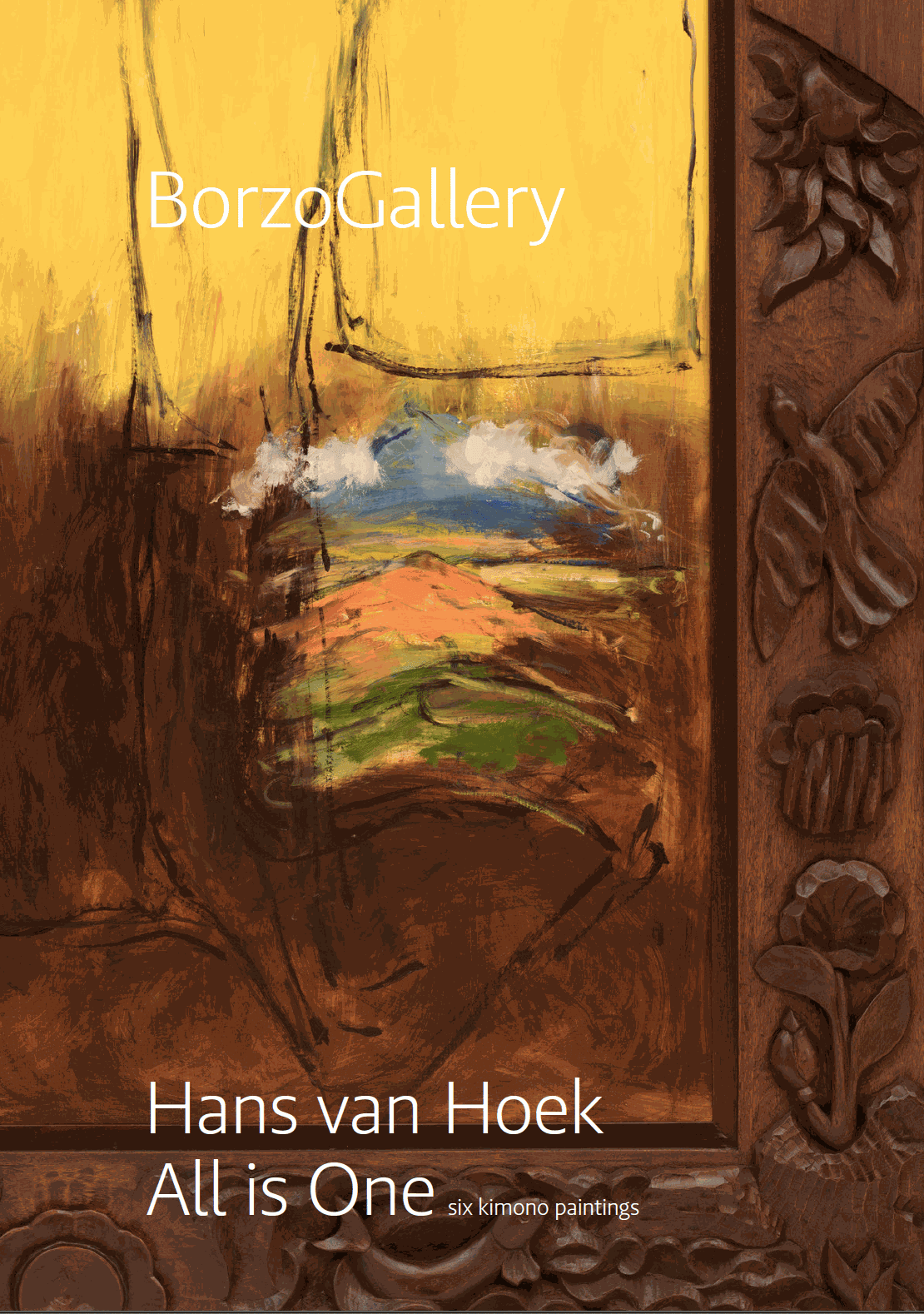PAN Amsterdam 2018: Stand 29
Op verzoek van de kunstenaar is van een begeleidende tekst afgezien / It is the wish of the artist not to have a text published.
In Edy de Wilde's legendary farewell exhibition La Grande Parade in the Stedelijk Museum in 1984, three paintings by Hans van Hoek are shown. All three are portrayed in the catalogue, neatly positioned in alphabetical order between Philip Guston and Jasper Johns and with the above-mentioned text as the only caption.

That was then. It is now almost 35 years later and unperturbed the artist has continued to work on his oeuvre in respectively Deurne, Barrydale South Africa and for a few years now back in the village of his birth in Brabant. His most striking painting in La Grande Parade is undeniably 'Rode Kimono' from 1975. At the time - and still today - Van Hoek is here showcasing his admiration for and fascination with the great masters from the past such as Michelangelo, Cezanne and El Greco. In 'Rode Kimono' a direct reference to El Greco's imposing 'El Espolio' can be seen.
When I looked up the artist in his studio earlier this year after a lengthy absence, I was struck by a series of six formidable paintings, with Kimono as the subject in each. This reunion with the artist along with the confrontation with these six recent Kimono paintings - all created between 2014 and 2018 - proves to be the prelude for the current presentation and publication.
While talking with Hans van Hoek it becomes apparent that the 'Kimono' theme has a deeper significance for him. Not only is it a beautifully decorated ceremonial coat in Japanese culture - however much Van Hoek admires this culture - but he portrays the kimono as a 'cosmic body' for earth, sun and stars, as a metaphor for the cycle of life, in the paintings - and the frames! - treated and enriched with earthly and cosmic symbols.
The originally Christian connotation in Hans van Hoek's early work has now given way to a universal spirituality, which is found in particular in the texts and quotes painted on the canvas or chiselled into the monumental frames he carves himself. This spirituality is expressed not only in his choice of subject, but also in his attitude as an artist and the method he uses. While Van Hoek essentially sees the painting of a picture as predominantly a mental activity, the extremely labour-intensive and traditional skills of constructing the frame follow as physical work.
It should come as no surprise that with regard to quantity Hans van Hoek's oeuvre cannot be large. Since the 'Rode Kimono' from 1975 he has only produced around 200 paintings. The series of six recent 'Kimono' paintings forms a special group (of a total of ten paintings with this theme) here, which starts with the first 'Rode Kimono' from Edy de Wilde's La Grande Parade.
Far removed from grandiloquent or airy statements about his art, Hans van Hoek still remains the down-to-earth - although well-read - artist, son of the Brabant countryside: I want nothing more than to make a painting that lives, that looks you in the eye and talks to you.
Paul van Rosmalen,
Amsterdam, november 2018
Opening hours
18 and 24 November | 12 - 19 pm
19, 20, 21, and 23 November | 12 - 21 pm
22 and 25 November | 12 - 18 pm
Location
Europaplein 20
1078 GZ Amsterdam













